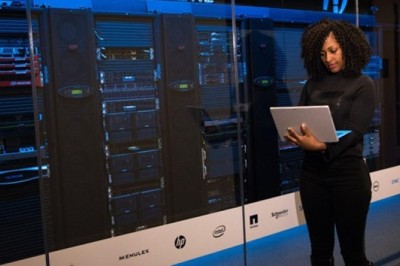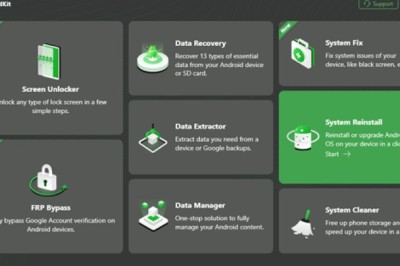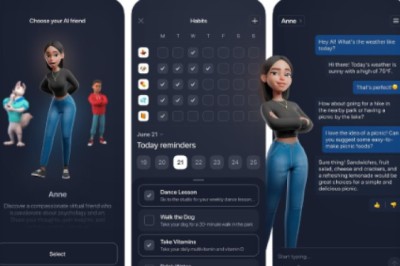views
One thing is evident as organizations throughout the world transition from remote to hybrid work: the folks who went home to work in 2020 are not the same people who return to the office in 2022. The past two years have left an indelible mark, and employee expectations are higher than ever. They want more freedom and face time, and they’re changing careers to focus on their personal objectives and well-being. And, according to the conclusions of our Work Trend Index for 2022, there’s no going back to the way things were. Every leader today faces a challenge in understanding and keeping up with new expectations, and it’s one that will be critical to making hybrid work successful.
The results of a recent Microsoft study show responses from 31,000 people in 31 countries, as well as an analysis of trillions of Microsoft 365’s productivity signals and LinkedIn labor trends. The employees were asked about what motivates them to stay or leave, what they expect out of an in-office experience, and what role technology plays in establishing a rewarding work experience from the front lines to the C-suite.
The study revealed five critical patterns that serve as a road map for executives today as they navigate the unfamiliar realm of the hybrid work model:
Employees have refined the “why” of work
Work is evolving in terms of how, where, and when it is done, as well as why it is done. People’s expectations of employment have changed, as has their willingness to make sacrifices in exchange for a job. According to the above-mentioned survey, 53% of people now place a higher priority on their health and well-being than on their work. These aren’t hollow words; last year, 18% of respondents left their jobs. In the coming year, 52% of Gen Z and millennials are likely to look for new employment, indicating that the Great Reshuffle is far from over.
Managers are feeling the pressure
It’s no easy task to keep up with these increased employee requirements. And without management, it won’t be possible. These people are closest to the employees and have the most insight into issues and solutions. All of this knowledge is useless if managers are unable to act on it. Despite the evident demand for flexibility that we observe in our study, 50% of leaders say they expect to return to the workplace in person this year. Managers are feeling the heat, with 54% believing leadership is out of touch with employee expectations and 74% believing they lack the power or resources to execute change for their team. Thus, it is better to get out of the way and let managers lead their teams as it can lead to better results and benefits. One of the best ways to lessen the pressure at work is to utilize the best intranet software that can boost every employee’s overall performance.
Make office hours useful
Only 28% of leaders have written new team agreements for hybrid work, despite the fact that 38% of hybrid employees say their biggest issue is determining when and why to come into the office. Furthermore, while 43% of remote workers do not feel included in meetings, only 27% of executives claim their organization has established hybrid meeting etiquette to guarantee everyone is included and involved. It’s time to reassess the office’s role and be more deliberate about who, where, and why in-person meetings are held. These new cultural standards will ensure that the workplace adds value to the employee experience, allowing all employees to feel connected, engaged, and capable of doing their best job.
Do not take hybrid work as “always-on”
Meetings and chats are increasing day by day, according to Microsoft 365 productivity trends, frequently spilling over the usual 9-to-5 workday. In fact, the average Teams user’s weekly meeting time has increased by 252% since March 2020, while after-hours and weekend work has increased by 28% and 14%, respectively. It’s terrific to see employees changing their days to match their requirements — for example, people are taking fewer lunchtime meetings — but for flexible work to be sustainable, managers will need to establish new standards and set boundaries to prevent a 24-hour workforce.
Challenges in rebuilding social capital
The influence of remote work on our relationships is one of the most felt parts of it. The Work Trend Index from last year suggested that teams were becoming more segregated, and this year’s analysis confirms the trend. While the majority of hybrid workers have been able to keep their team relationships (58%), just half of the remote workers say their direct team is prospering, and even fewer (42%) think they have a solid relationship with those outside their team. In a hybrid world, prioritizing time to create relationships and providing additional assistance for both types of employees (remote and newly onboarded employees), who are most at risk of being left behind, are critical.
Hybrid work necessitates a methodical, intentional approach. While so much depends on new cultural norms, the shift will be aided by technologies intended for this hybrid world — those that bridge the digital and physical worlds, allowing every person to interact and contribute regardless of where, when, or how they work. Microsoft has shown some of its most recent product improvements that allow for hybrid work.
Solutions for the hybrid workplace
Viva Inspiration Library
Microsoft is launching a new Microsoft Viva Insights, which will feature thought leadership and all of the best practices from world-class experts including Harvard Business Review and Thrive. Employers will be able to use the Inspiration library to guide managers and leaders as they define their teams’ new normal, in addition to assisting employees in making the most of their workday.
PowerPoint Recording Studio and Cameo
Meeting time is now higher than it has ever been. Our consumers require new ways to collaborate asynchronously in order to reduce meeting overload. You can keep a recording for yourself if you are giving a presentation. Later, you can easily share it with co-workers to watch at their leisure using PowerPoint Recording Studio. Cameo allows you to choose how and where you appear in your presentations.
Teams Connect
Nearly every business uses digital technologies to complete tasks, and this digital collaboration cannot be limited to your own walls. Teams Connect allows you to quickly establish seamless, safe, and trusted communication across various enterprises, allowing everyone to work as one extended team while remaining in specific Teams and there would be no need to switch tenants.
Surface Hub 2 Smart Camera
You may know that the Surface Hub was already a fantastic tool for connecting teams and enabling new types of collaboration. The benefits of Surface Hub have been extended to distant participants with upgrades to the Microsoft Teams and Whiteboard experiences. Moreover, the addition of the new Microsoft Surface Hub 2 Smart Camera has changed the game. The Surface Hub 2 Smart Camera is Microsoft’s first AI-powered camera, with intelligent framing, an ultra-wide field of view, and picture optimization to provide remote guests with a first-class view of what’s going on, irrespective of conference room size or arrangement.
Teams Rooms with Front Row
According to Microsoft research, making everyone in a hybrid meeting feel included, irrespective of where they are sitting is critical to making hybrid work successful. The video gallery shows at the bottom of the screen in Front Row in Teams, allowing in-room participants to observe remote colleagues face-to-face, it is identical to being in the same room.
Outlook RSVP
In light of the fact that coordinating time together is a top problem for hybrid employees, it’s time to make planning easier. Now it is easy to decide whether you’ll attend a meeting in person or virtually using Outlook. After all, no one wants to go to work in an empty office.
Conclusion
New technologies or business policies aren’t the first steps toward a hybrid workplace. It all starts with a company culture that promotes a growth mentality and a readiness to rethink practically every facet of how work is done. To adapt to this new style of working, every employee will need to learn new skills and he needs to be committed. In addition, the worker also needs the right support and tools. It is the only way in which hybrid work can unlock the potential for a workplace that works for everyone.
























Comments
0 comment